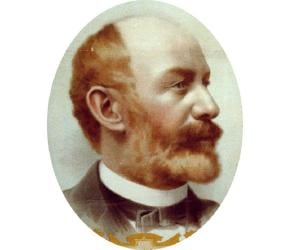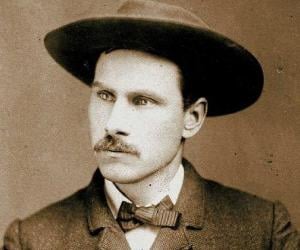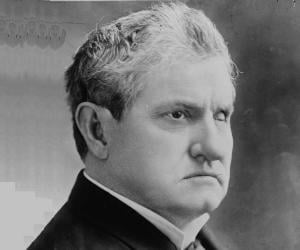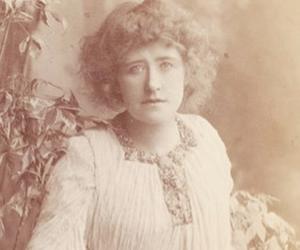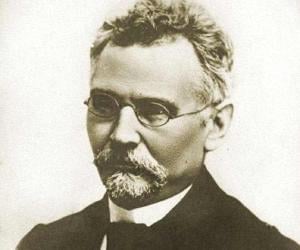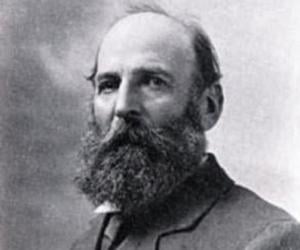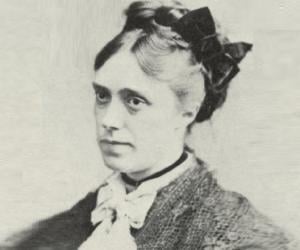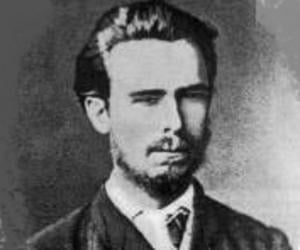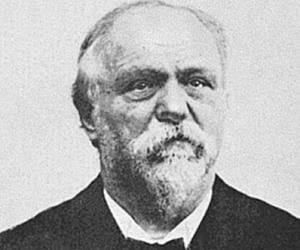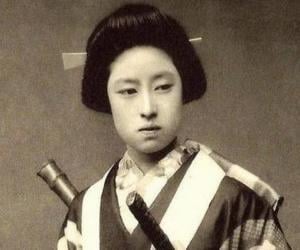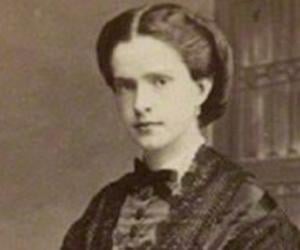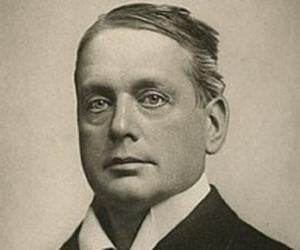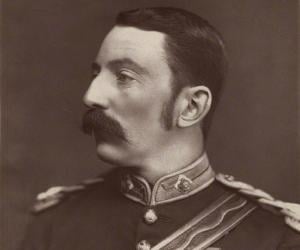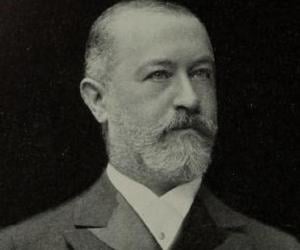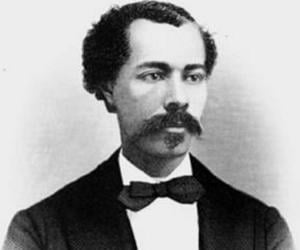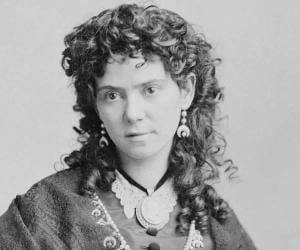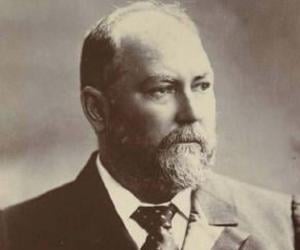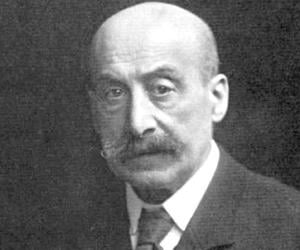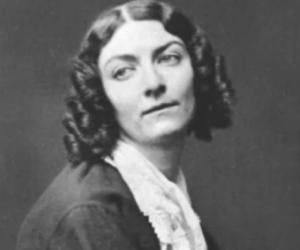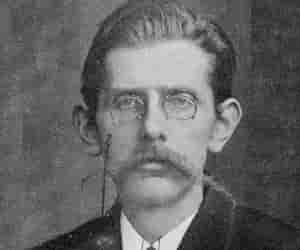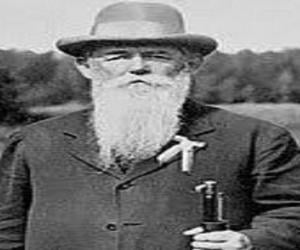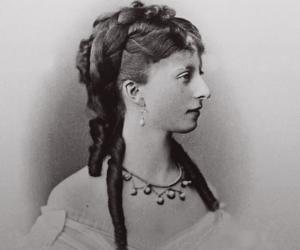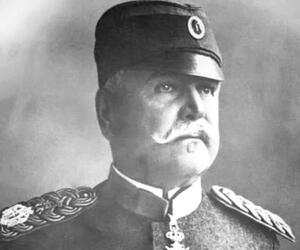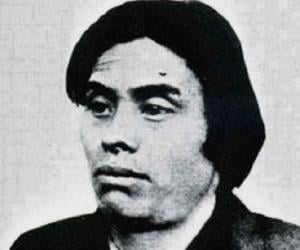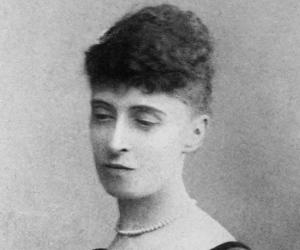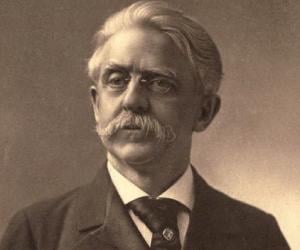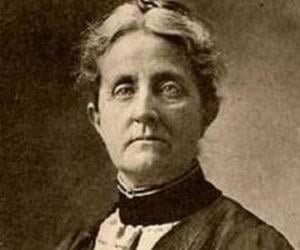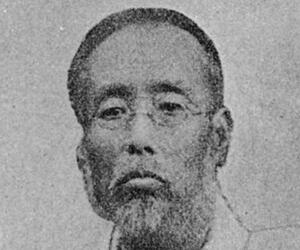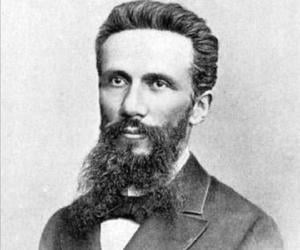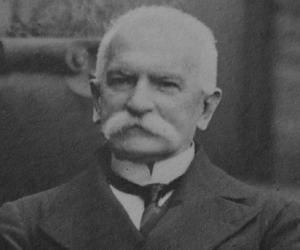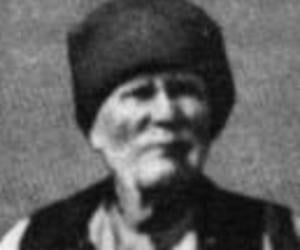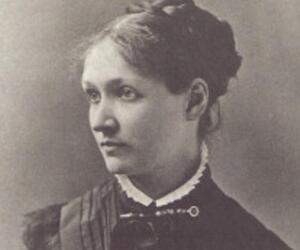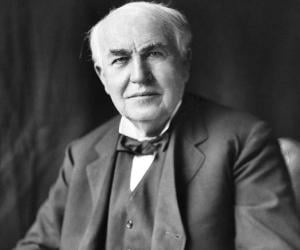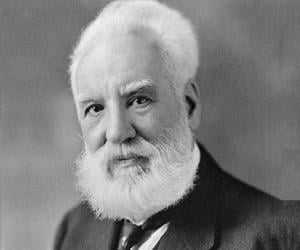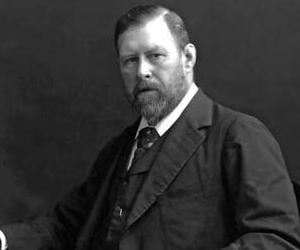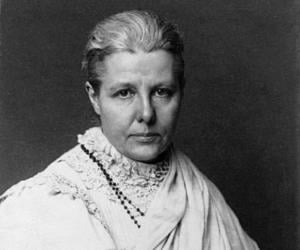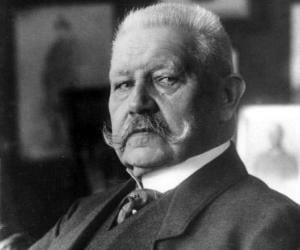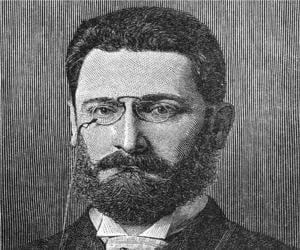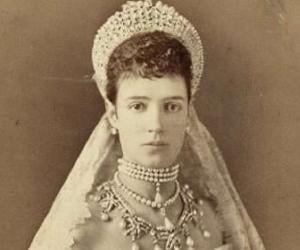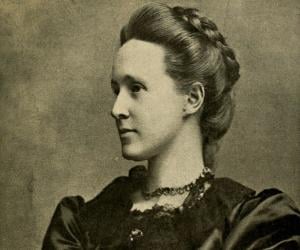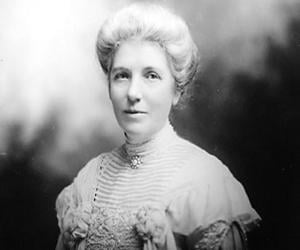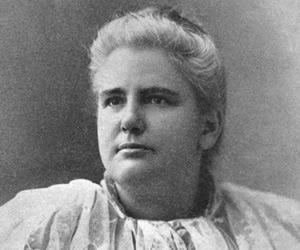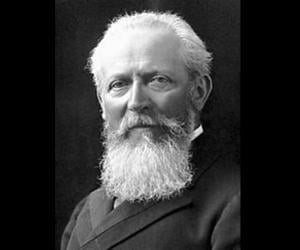Famous People Born In 1847
Discover the most famous people born in 1847. The list includes people like Thomas Edison, Alexander Graham Bell, Jesse James, Bram Stoker, Paul von Hindenburg and many more. This list of celebrities is loosely sorted by popularity. People featured on this list, include political leaders, soldiers, novelists and military leaders born in 1847. This list includes people from United States, England, France & Germany and many more countries.
Vote for Your Favourite Person
Right IconThis ranking is based on an algorithm that combines various factors, including the votes of our users and search trends on the internet.
1
Thomas Edison(Inventor of Phonograph, Motion Picture Camera and Early Version of the Electric Light Bulb)
Birthdate: 11th February
Sun Sign: Aquarius
Birthplace: Milan, Ohio, United States
Died: October 18, 1931
Described as America’s greatest inventor, Thomas Edison’s legacy is an everlasting one. He was the first to help make the incandescent light bulb commercially viable, even though he was not the first inventor of it. Quadruplex telegraph, phonograph, motion picture camera and the alkaline storage battery are some the many innovations that made him a worldwide phenomenon and an icon.
2
Alexander Graham Bell(Inventor of Telephone & Co-Founder of 'American Telephone and Telegraph Company (AT&T)')
Birthdate: 3rd March
Sun Sign: Pisces
Birthplace: Edinburgh, Scotland
Died: August 2, 1922
Alexander Graham Bell was a scientist, inventor, and engineer. He is credited with inventing the first functional telephone. He is also credited with co-founding America's major telephone company AT&T, which has been going strong since 1885. Bell's later life was marked by his groundbreaking work in aeronautics, hydrofoils, and optical telecommunications. He was also an ardent supporter of compulsory sterilization.
3
Bram Stoker(Irish Author Best Known for His Horror Novel ‘Dracula’)
Birthdate: 8th November
Sun Sign: Scorpio
Birthplace: Clontarf, Dublin, Ireland
Died: April 20, 1912
Irish author Bram Stoker wrote the iconic Gothic novel Dracula, which has inspired scores of movies over the years. The Victorian-era author also served as the personal assistant of actor Sir Henry Irving and managed the Lyceum Theatre, which was owned by Irving. He had also written many short stories.
4
Annie Besant(British Social Reformer, Theosophist and Women's Rights Activist)
Birthdate: 1st October
Sun Sign: Libra
Birthplace: Clapham Town, London, United Kingdom
Died: September 20, 1933
Annie Besant was a British theosophist, socialist, writer, orator, educationist, women's rights activist, and philanthropist. Despite being British, Besant supported India's freedom movement and even joined the Indian National Congress. She is also credited with co-founding Banaras Hindu University. Besant also helped launch the Indian Home Rule movement to campaign for democracy in the country.
Birthdate: 2nd October
Sun Sign: Libra
Birthplace: Poznań, Poland
Died: August 2, 1934
Paul von Hindenburg served as the second president of the German Weimar Republic, from 1925 to 1934. In 1933, he appointed Adolf Hitler as the Chancellor of Germany, and also signed the Enabling Act, which gave Hitler total administrative powers. Following his death, Hitler declared himself the Führer.
Birthdate: 10th April
Sun Sign: Aries
Birthplace: Makó
Died: October 29, 1911
Joseph Pulitzer was a newspaper publisher who became a national figure in the Democratic Party after crusading against corruption and big business. Pulitzer is also credited with founding the Columbia School of Journalism. The world-renowned Pulitzer Prizes, which are awarded annually to reward excellence in various fields, are named in his honor.
Birthdate: 26th November
Sun Sign: Sagittarius
Birthplace: Yellow Palace, Copenhagen, Denmark
Died: October 13, 1928
Maria Feodorovna was a Danish princess who married Emperor Alexander III and became Empress of Russia. She was the second daughter of King Christian IX of Denmark and Louise of Hesse-Kassel. She grew up to be a beautiful and charming woman. She was married to Alexander Alexandrovich, the son of Emperor Alexander II and his first wife Maria Alexandrovna.
8
Millicent Fawcett(Feminist Politcian Who Led the Women's Suffrage Movement in Britain)
Birthdate: 11th June
Sun Sign: Gemini
Birthplace: Aldeburgh, England
Died: August 5, 1929
A pioneering leader of the women’s suffrage movement in Britain, Millicent Fawcett also co-established the Newnham College, Cambridge, which was one of the first English women’s universities. She also served as the president of the National Union of Women's Suffrage Societies and investigated British concentration camps during the South African War.
9
Kate Sheppard(The Most Prominent Member of the Women's Suffrage Movement in New Zealand)
Birthdate: 10th March
Sun Sign: Pisces
Birthplace: Liverpool, England
Died: July 13, 1934
Born in England and educated in Scotland, Kate Sheppard later moved with her family to New Zealand. A fiery feminist, she led the WCTU women’s suffrage campaign, making New Zealand the first country that granted its women the right to vote. She also encouraged women to participate in physical activities.
10
James A. Bailey
(American Owner and Manager of Several 19th-Century Circuses)
Birthdate: 4th July
Sun Sign: Cancer
Birthplace: Detroit, Michigan, United States
Died: April 11, 1906
James A. Bailey was an American impresario and circus ringmaster. He is credited with co-founding one of the greatest circus companies of all time, Barnum and Bailey's Circus. A year after his death, his widow sold the circus to the Ringling brothers, resulting in the formation of the Ringling Bros. and Barnum & Bailey Circus.
11
Frank E. Butler
(American Marksman)
Birthdate: 30th January
Sun Sign: Aquarius
Birthplace: Longford, Ireland
Died: November 21, 1926
12
Benjamin R. Tillman
(Politician)
Birthdate: 11th August
Sun Sign: Leo
Birthplace: Trenton, South Carolina, United States
Died: July 3, 1918
Birthdate: 27th February
Sun Sign: Pisces
Birthplace: Coventry, United Kingdom
Died: July 21, 1928
Birthdate: 14th February
Sun Sign: Aquarius
Birthplace: Newcastle-on-Tyne, England
Died: July 2, 1919
15
Bolesław Prus
(Polish Novelist and One of the Leading Figures of the Positivist Period in Polish Literature)
Birthdate: 20th August
Sun Sign: Leo
Birthplace: Hrubieszow, Poland
Died: May 19, 1912
Orphaned at age 9, Bolesław Prus had a tough childhood. He later participated in the January Insurrection and then became a successful journalist. A talented author of short stories, such as The Waistcoat, and novels, such as The Doll, he was part of the Polish positivist literary movement.
16
Koos de la Rey
(Military officer)
Birthdate: 22nd October
Sun Sign: Libra
Birthplace: Doornfontein, Winburg, South Africa
Died: September 15, 1914
17
Camille Doncieux
(French Painter, Model and First Wife of Painter Claude Monet)
Birthdate: 15th January
Sun Sign: Capricorn
Birthplace: Lyon, France
Died: September 5, 1879
18
Sergey Nechayev
(Revolutionary)
Birthdate: 2nd October
Sun Sign: Libra
Birthplace: Ivanovo, Russia
Died: December 3, 1882
19
Georges Sorel
(Social Thinker, Political Theorist & Historian Known for His Advocacy of 'Sorelianism')
Birthdate: 2nd November
Sun Sign: Scorpio
Birthplace: Cherbourg, France
Died: August 29, 1922
Georges Sorel was a French political theorist, social thinker, journalist, and historian. He is credited with inspiring Sorelianism, a support system for his ideologies. Georges Sorel is also credited with inspiring several socialists, Fascists, Marxists, and anarchists. In 1891, Georges Sorel was honored with the prestigious Légion d'honneur.
Birthdate: 12th July
Sun Sign: Cancer
Birthplace: Edo, Japan
Died: October 10, 1868
21
Maria Pia of Savoy
(Consort)
Birthdate: 16th October
Sun Sign: Libra
Birthplace: Royal Palace, Turin, Sardinia
Died: July 5, 1911
Maria Pia of Savoy was an Italian princess who became the Queen of Portugal after marrying King Luís I of Portugal in 1862. She was the third queen to represent the House of Savoy. Maria Pia is best remembered for her compassion and charitable works. She was often referred to as the mother of the poor and angel of charity.
22
Archibald Primrose, 5th Earl of Rosebery
(Prime Minister of the United Kingdom from March 1894 to June 1895)
Birthdate: 7th May
Sun Sign: Taurus
Birthplace: London, England, United Kingdom
Died: May 21, 1929
23
John Chard
(Engineer, Military personnel)
Birthdate: 21st December
Sun Sign: Sagittarius
Birthplace: Plymouth
Died: November 1, 1897
Royal Engineers army officer John Chard was one of the 11 men to receive the Victoria Cross for defeating a Zulu army of 4,000 warriors at the battle of Rorke's Drift, with a British army of 135. His handwritten account of the war was later auctioned off for £175,000.
24
Jacob Schiff
(German-born American Banker & Philanthropist Who Financed the Expansion of American Railroads)
Birthdate: 10th January
Sun Sign: Capricorn
Birthplace: Frankfurt
Died: September 25, 1920
Jacob Schiff was a German-born American banker, philanthropist, and businessman. He is credited with financing the expansion of American railroads. Jacob Schiff also played an important role during the Russo-Japanese War where he helped finance the Japanese military efforts.
25
John R. Lynch
(American Writer, Attorney and Military Officer)
Birthdate: 10th September
Sun Sign: Virgo
Birthplace: Vidalia, Louisiana, United States
Died: November 2, 1939
Birthdate: 25th September
Sun Sign: Libra
Birthplace: Madison, Wisconsin, United States
Died: January 12, 1914
27
Philipp, Prince of Eulenburg
(Diplomat)
Birthdate: 12th February
Sun Sign: Aquarius
Birthplace: Kaliningrad, Prussia
Died: September 17, 1921
28
John Forrest
(Australian Politician, Explorer and the First Premier of Western Australia)
Birthdate: 22nd August
Sun Sign: Leo
Birthplace: Bunbury, Australia
Died: September 2, 1918
John Forrest was an Australian politician and explorer. He is best remembered for his service as the first premier of Western Australia from 1890 to 1901. He also served as the Treasurer of Australia on four occasions between 1905 and 1918. A prominent politician, John Forrest also served as the Minister for Defence from 1901 to 1903.
Birthdate: 20th February
Sun Sign: Pisces
Birthplace: London, England
Died: December 16, 1897
30
Max Liebermann
(German Painter Who Is Known for His Naturalistic Studies of the Life and Labour of the Poor)
Birthdate: 20th July
Sun Sign: Cancer
Birthplace: Berlin, Germany
Died: February 8, 1935
Although considered the foremost promoter of Impressionism in Germany, painter and printmaker Max Liebermann never fully detached himself from his subject matters. Known for his works on the life and labor of the poor, including peasants, urban laborers, and orphans, portraying their plight through paintings like The Flax Spinners., he successfully maintained the narrative tradition of the German art.
31
Albert Pinkham Ryder
(Painter)
Birthdate: 19th March
Sun Sign: Pisces
Birthplace: New Bedford, Massachusetts, United States
Died: March 28, 1917
32
Charles Follen McKim
(Architect)
Birthdate: 24th August
Sun Sign: Virgo
Birthplace: Chester, Pennsylvania, United States
Died: September 14, 1909
Nineteenth-century Beaux-Arts architect Charles Follen McKim was a major part of the Neoclassical revival. The Harvard alumnus became a master architect and specialized in making houses out of shingles. He co-founded the firm McKim, Mead & White, and his notable works include the Columbia University and the Boston Public Library.
33
Lotta Crabtree
(American Actress, Entertainer, Comedian, and Philanthropist)
Birthdate: 7th November
Sun Sign: Scorpio
Birthplace: New York City, New York, United States
Died: September 25, 1924
Lotta Crabtree was an entertainer, actress, and comedian who became one of the most beloved and wealthiest American entertainers during the late-19th century. She was also a well-known philanthropist; she left an estate worth $4 million for a charitable trust as part of her will. Dubbed The Nation's Darling, Lotta Crabtree's life and career inspired the 1951 film Golden Girl.
34
Jens Peter Jacobsen
(Danish Novelist, Poet, and Scientist)
Birthdate: 7th April
Sun Sign: Aries
Birthplace: Thisted, Denmark
Died: April 30, 1885
Danish author Jens Peter Jacobsen is remembered for pioneering the Naturalist mode of writing in Danish literature. While he initially translated some of Charles Darwin’s works, he later penned novels such as Marie Grubbe: A Lady of the Seventeenth Century. He is also known for his poems, which were released posthumously.
Birthdate: 20th October
Sun Sign: Libra
Birthplace: Oslo Christiania, Norway
Died: November 5, 1906
One of the earliest Skagen painters, Norwegian artist Frits Thaulow was a pioneering figure of Impressionist painting in Norway. Best remembered for his marine landscape painting, he later received the French Legion of Honor. Picquigny, Ambiance Du Soir, and Dordrecht remain some of his best-known works.
36
Otto Wallach(German Chemist Who was Awarded Nobel Prize for His Work on Alicyclic Compounds)
Birthdate: 27th March
Sun Sign: Aries
Birthplace: Königsberg
Died: February 26, 1931
Otto Wallach was a German chemist best remembered for winning the Nobel Prize in Chemistry in 1910. He won the award for his work on alicyclic compounds. Wallach is also remembered for developing the Wallach rearrangement, the Leuckart-Wallach reaction, Wallach degradation, and Wallach's rule. In 1912, Otto Wallach was honored with the prestigious Davy Medal.
37
Oscar Swahn
(Sport Shooter)
Birthdate: 20th October
Sun Sign: Libra
Birthplace: Götaland, Sweden
Died: May 1, 1927
38
Catherine Dolgorukov
(Russian Aristocrat and the Daughter of Prince Michael Dolgorukov)
Birthdate: 2nd November
Sun Sign: Scorpio
Birthplace: Volhynian Governorate, Russian Empire
Died: February 15, 1922
39
Radomir Putnik
(Serbia's First Field Marshal and Chief of the General Staff)
Birthdate: 24th January
Sun Sign: Aquarius
Birthplace: Kragujevac, Serbia
Died: May 17, 1917
Serbian army commander Radomir Putnik was the country’s first Field Marshal and Chief of the General Staff. He led the Serbs in the Balkan Wars and World War I. One of his most significant wins was against the Austro-Hungarian army in the battles of Cer and Kolubara in 1914.
40
Kobayashi Kiyochika
(Japanese Artist Best Known for His Colour Woodblock Prints and Newspaper Illustrations)
Birthdate: 10th September
Sun Sign: Virgo
Birthplace: Edo, Japan
Died: November 28, 1915
Japanese ukiyo-e woodblock printer Kobayashi Kiyochika had also mastered oil painting and photography. He pioneered the kōsen-ga technique, which included Western traditions and a play of light and shade. Cat on the Canvas and Tokyo and Its Suburbs remain two of his best-known series of paintings.
41
Julia A. Moore
(American poet)
Birthdate: 1st December
Sun Sign: Sagittarius
Birthplace: Plainfield charter Township, Michigan, United States
Died: June 5, 1920
42
Alice Meynell
(British Poet and Essayist)
Birthdate: 11th October
Sun Sign: Libra
Birthplace: Barnes, London, England
Died: November 27, 1922
British writer and poet Alice Meynell was mostly raised in Italy. Her sonnet My Heart Shall Be Thy Garden impressed publisher Wilfrid Meynell, whom she later married. Remembered for works such as Preludes, she used simple words. She was also an ardent supporter of equal suffrage for women.
Birthdate: 5th October
Sun Sign: Libra
Birthplace: Bergerac, France
Died: February 10, 1922
44
Henry Demarest Lloyd
(Journalist)
Birthdate: 1st May
Sun Sign: Taurus
Birthplace: New York City, New York, United States
Died: September 28, 1903
45
Mary Watson Whitney
(American Astronomer Who Built Vassar College’s Research Program in Astronomy Into One of the Nation’s Finest)
Birthdate: 11th September
Sun Sign: Virgo
Birthplace: Waltham, Massachusetts, United States
Died: January 21, 1921
American astronomer Mary Watson Whitney served as a professor and director of the Vassar Observatory for over two decades. Her teaching and research work were related to comets, asteroids, double stars and variable stars and also on measurements by photographic plates. The Vassar Observatory published 102 scientific papers under her direction. She became the first president of Maria Mitchell Association.
Birthdate: 8th December
Sun Sign: Sagittarius
Birthplace: Kōchi, Japan
Died: December 13, 1901
47
Galileo Ferraris
(One of the Pioneers of AC Power System and Inventor of the Induction Motor)
Birthdate: 31st October
Sun Sign: Scorpio
Birthplace: Livorno Ferraris, Italy
Died: February 7, 1897
Galileo Ferraris was an Italian university professor, physicist, and electrical engineer. He was one of the pioneers of AC power system. He is also credited to be the inventor of the three-phase induction motor although he never patented his work. He worked at the Italian Industrial Institution and later at the Italian Electrotechnical Association.
48
Sidney Sonnino
(Statesman)
Birthdate: 11th March
Sun Sign: Pisces
Birthplace: Pisa, Italy
Died: November 24, 1922
49
Idriz Seferi
(Albanian Guerrilla Fighter and Leader)
Birthdate: 14th March
Sun Sign: Pisces
Birthplace: Sefer, Serbia
Died: March 25, 1927
Idriz Seferi was an Albanian guerrilla fighter and leader. He is best remembered for his association with the popular revolutionary commander Isa Boletini, with whom Seferi organized the famous 1910 Uprising to defeat the Ottoman Empire. When the uprising was suppressed by the Ottoman Empire, Idriz Seferi continued warfare by taking part in the 1912 Uprising.
50
Mary Anna Hallock Foote
(Author)
Birthdate: 9th November
Sun Sign: Scorpio
Birthplace: Milton, New York, United States
Died: June 25, 1938
